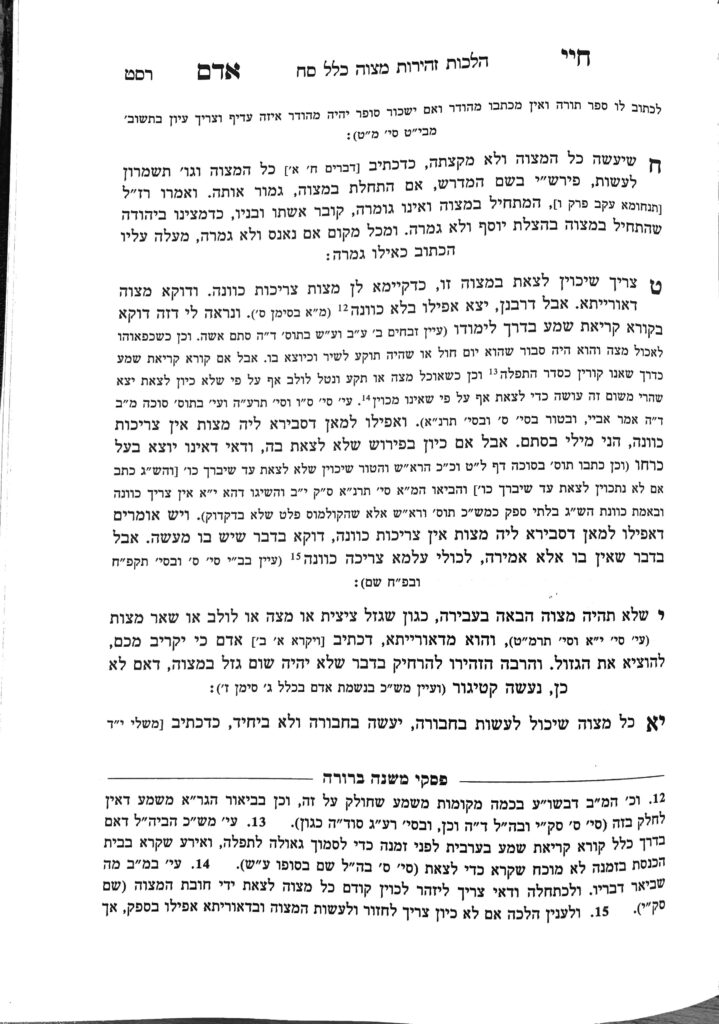We are beginning siman 11. The Chayei Adam writes that if a person has an opportunity to perform a mitzvah alone or with a group, they should perform the mitzvah with the group. The pasuk in Mishlei says b’rov am hadras melech (Mishlei 14:28), the larger the group the more kavod for Hashem. Chazal add that not only is there greater kavod with a larger group, but it generates a greater kedusha. In the brachos at the beginning of parshas Bechukosai, the pasuk says that five Jews will cause 100 non-Jews to flee, and 100 Jews will cause 10,000 non-Jews to flee. Rashi points out that the math is not proportional, and explains that the kedusha of more members of Klal Yisroel coming together exponentially increases the bracha.
The Chayei Adam writes that the Gemara in Menachos indicates that a minimum of three people is required to be considered b’rov am. The Gemara talks about the process of taking parts of the animal and putting them on the mizbeach, and then taking other parts and distributing them to the kohen. Part of the process was to do a tenufa, waving them together. There were three kohanim involved in this process, and the Gemara says that all three would be present in order to fulfill the concept of b’rov am. Thus, we see that three people is already a fulfillment of the concept of b’rov am. Based on this, it would seem that if a person has a choice to perform a mitzvah by themselves or with one other person, there is no difference. If a person has a choice to perform a mitzvah by themselves or with two other people, they should perform it with the other two, in order to fulfill this concept of b’rov am.
However, the Mishnah Berurah, in siman 8 regarding a tallis, in siman 168 regarding hamotzi, and siman 213 regarding birchas hanehenin, discusses one person saying a bracha for another. The Mishnah Berurah says that even with only one other person present, one person should make the bracha for both people, due to the concept of b’rov am. And the Mishnah Berurah elsewhere brings the Chayei Adam’s minimum of three, which seems to contradict himself. We will discuss this further, be’ezras Hashem.
Summary
The concept of b’rov am hadras melech is to perform mitzvos with a group, both as a kavod to Hashem and because it exponentially increases the kedusha. The Chayei Adam understands that a minimum of three people is required to be considered b’rov am.



